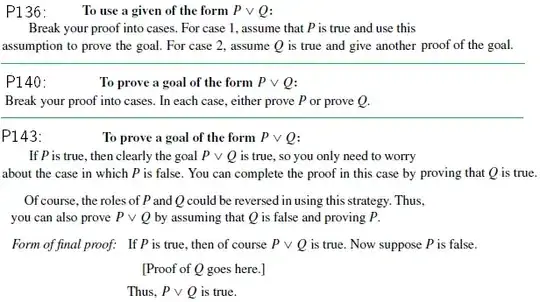
$\Large{{1.}}$ Are proofs using strategies $P136, P143$ always easier than those using $P140$? In the former two, only one statement (either $P$ or $Q$) must be proven. In the latter, both $P$ and $Q$ must be.
$\Large{{2.}}$ If so, should I be concerned with $P140$? Why moot it at all as a proof strategy?
$\Large{{3.}}$ I remember: $P \vee Q \text{ true} \iff \text{Either $P$ or $Q$ is true}$.
Nonetheless, I'm disconcerted and agitated by the act of assuming as true either $P$ or $Q$ without any proof, before proving the other statement.
I can't pinpoint why. Could someone please help?